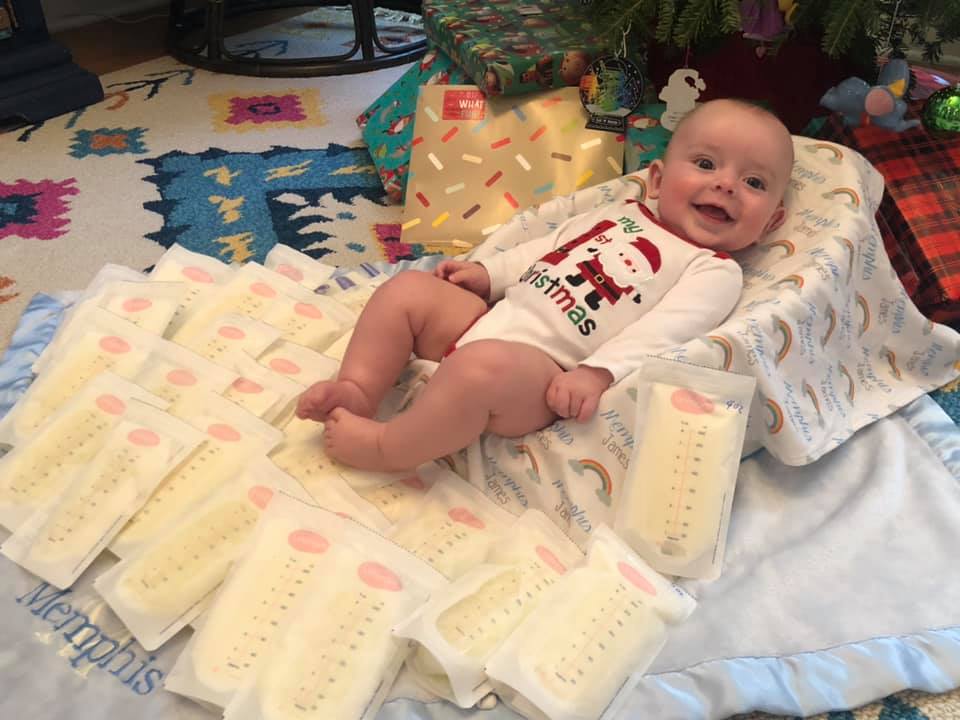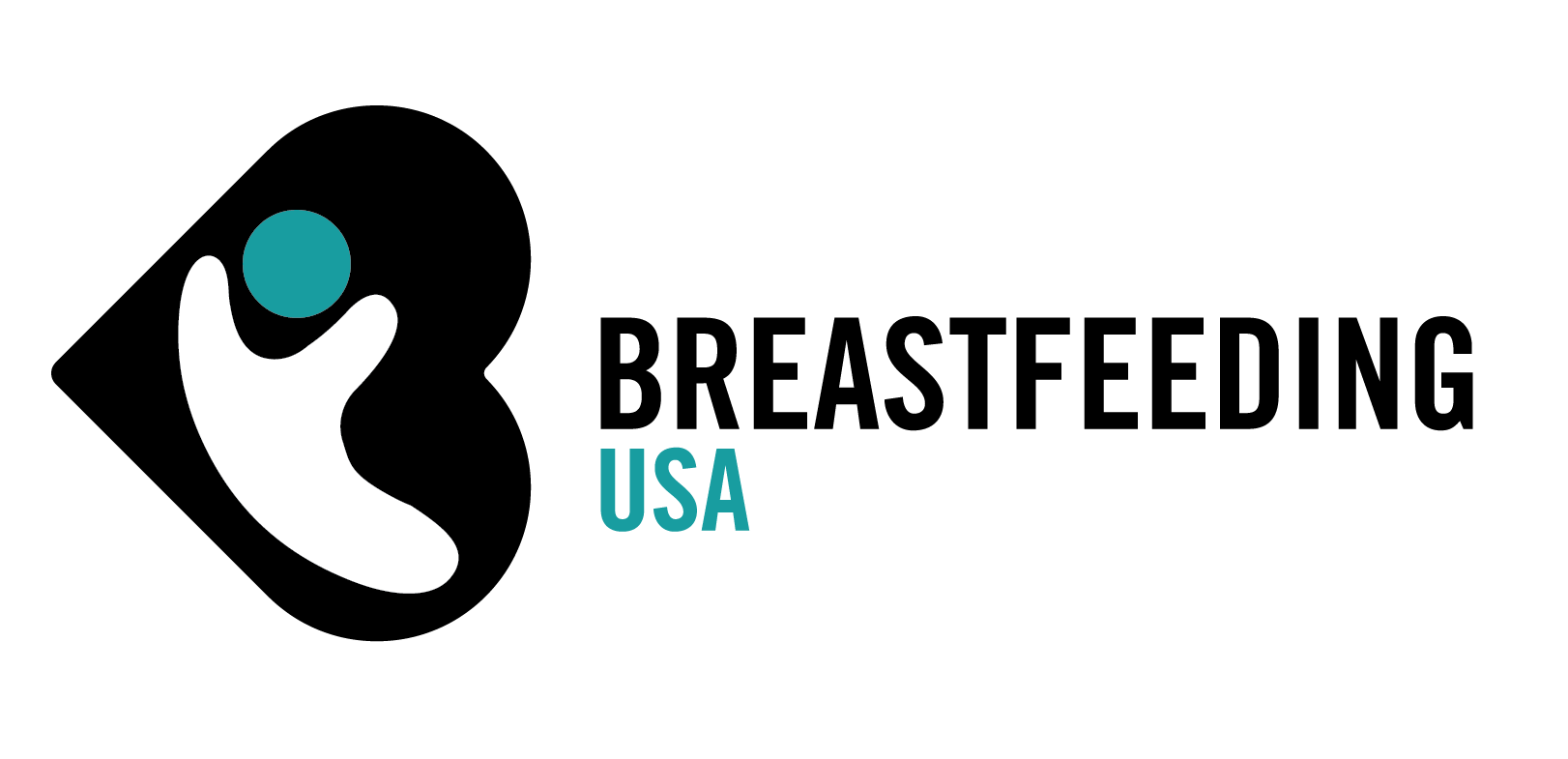By Sharon Knorr, BSMT (ASCP), Breastfeeding USA Counselor

For most of human history, the sharing of human milk has taken place in the form of one mother breastfeeding the baby of another. In most instances, the immediate benefit of this kind of milk sharing—the continued life of the baby—far outweighed any possible risks. Even today, during times of emergency or in remote areas, sharing human milk may be the only way to save the life of a child whose mother has been injured, killed or is gravely ill. There may be limited or no access to any other feeding alternatives. The World Health Organization lists “wet-nursing” and milk banks as being equal alternatives when mother’s own milk is not available. 1
In the United States, mothers investigate multiple sources of human milk for their babies when they themselves are unable to provide their own milk. Some are able to obtain milk from established Human Milk Banking Association of North America (HMBANA) milk banks that have a standardized system of collecting milk and screening donors. Others turn to family members and close friends in a more informal milk sharing arrangement which may include breastfeeding the baby and/or sharing milk for breastmilk feeding. In this age of the internet, still others are using social networking tools to link up with mothers who may be willing to donate milk. There is much debate now on the advisability of informal milk sharing amongst friends or strangers.
Some in the lactation community are worried that informal milk-sharing will negatively impact the ability of HMBANA milk banks to find donors. While this has not been documented as yet, it is something to consider, and mothers may want to investigate the possibility of donating to one of these milk banks before entering a more informal arrangement. Much of the milk from these banks goes to ill or premature babies and thus their screening process for donors is fairly stringent. Mothers seeking milk for full-term, healthy babies may be unable to obtain milk from HMBANA banks or to afford the cost. Even for fragile babies, HMBANA milk may not be available due to lack of donors. It is a difficult situation. It would be wonderful if HMBANA banks were operating in every community and their milk was more available and affordable – a worthy project for any lactation group or hospital to undertake. It is unfortunate that access to formula is so much easier than finding a source for human milk.
The risks of formula feeding have been well-documented. Depending on the situation, they can range from immediate risk of mortality from infections or SIDS to more long-range risks of increased rates of obesity, diabetes and some kinds of cancer. Some risks are more likely to pose immediate harm than others; some risks have a higher statistical probability than others. But the risk exists, there is no doubt about that.
While the use of human-milk substitutes involves documented risks to the baby, milk sharing is not without risk, either. Human milk that is carelessly collected or stored may be “contaminated by any number of potentially harmful microorganisms. Donor mothers may have diseases that could be transmitted through the milk; some may not even know that they are infected. Donor mothers may be taking drugs or herbs that could cause harm to the baby. It does seem that most donor mothers want to take all reasonable precautions to make sure that their milk poses no risk to the babies who receive it. Yet there is always the element of the unknown, even when using milk donated by friends or family.
As with any other health-related decision, mothers who choose to share milk informally need to weigh the risk versus the benefit to their babies. They need to take whatever measures they deem necessary to ensure the safety of the milk they are obtaining for their babies. Those measures could include having the donor fill out a questionnaire and/or submit to blood testing. Testing does not ensure that the milk will be “safe” for the baby. However, nobody can insure the safety of formula feeds, either, or the degree of risk if baby receives a human-milk substitute. There has been little research at this time comparing the risks of banked human milk versus informally shared human milk for babies in this country.2 There is no official place for mothers to report negative experiences they have had while engaging in informal milk sharing. It is a complex issue and one that deserves careful examination by anyone considering any kind of milk sharing.
Websites that advocate for informal milk-sharing, such as Eats on Feet and Human Milk 4 Human Babies, contain lots of information on this topic.
Again, mothers unable to nourish their babies with their own milk must decide for themselves, on a case by case basis, what is best for their situation. Parents are responsible for their own children and must live with the outcomes of their decisions. Mothers are encouraged to fully research the available options in order to make an informed decision.
References
- From WHO: Global Strategy for Infant and Young Child Feeding, #18 (page 17):
“…..For those few health situations where infants cannot, or should not, be breastfed, the choice of the best alternative – expressed breast milk from an infant’s own mother, breast milk from a healthy wet-nurse or human-milk bank, or a breast-milk substitute ……depends on individual circumstances.” - Keim SA1, Hogan JS, McNamara KA, Gudimetla V, Dillon CE, Kwiek JJ, Geraghty SR. Microbial contamination of human milk purchased via the Internet. Pediatrics. 2013 Nov;132(5):e1227-35. doi: 10.1542/peds.2013-1687. Epub 2013 Oct 21.
- Sriraman Natasha K., Evans Amy E., Lawrence Robert, Noble Lawrence, and the Academy of Breastfeeding Medicine’s Board of Directors. Breastfeeding Medicine. January 2018, ahead of print. https://doi.org/10.1089/bfm.2017.29064.nks
For more information
- Use of Donor Human Milk from the FDA
- Milk sharing: from private practice to public pursuit by James E Akre, Karleen D Gribble, and Maureen Minchin. International Breastfeeding Journal 2011, 6:8 (25 June 2011)
- Biomedical ethics and peer-to-peer milk sharing by Karleen D. Gribble. Clinical Lactation, 3(3):109-112 (2012).
Revised January 2017
Sharon Knorr, BSMT (ASCP), Breastfeeding USA Counselor
Sharon is presently employed as a clinical laboratory scientist in a local hospital. She is married with two grown children.
© Copyright Breastfeeding USA 2012. All rights are reserved.
